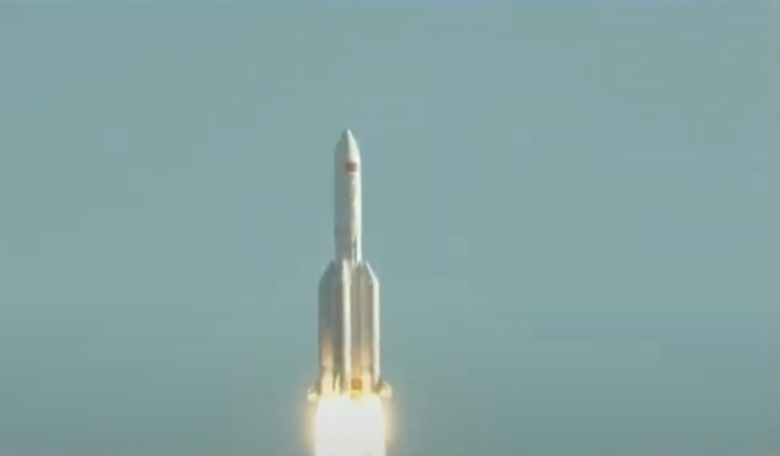China successfully launched its new experimental crew spacecraft on a Long March 5B rocket yesterday, clearing the way forward for the launcher to carry space station modules to low Earth orbit.
The 53.7-metre-tall (176-foot) Long March 5B rocket, which has been especially developed for China's manned space program, blasted off Wenchang Satellite Launch Center on Hainan Island in southern China – the country’s newest spacecraft launch site – at 6 pm (Beijing Time).
Around eight minutes later the uncrewed prototype spacecraft, along with the trial version of the cargo return capsule, separated from the rocket and entered its “predetermined orbit”, said officials at the China Manned Space Agency (CMSA).
"We are excited to witness the liftoff of the Long March-5B carrier rocket 50 years after the launch of China's first satellite Dongfanghong-1. The success of the mission is another major breakthrough of China's aerospace development," Ji Qiming, an assistant to the CMSA director, said at a press conference Tuesday evening.
A high-speed reentry is expected 8 May that will aid in the testing of new heat shielding.
Other key re-entry technologies such as recovery technology, parachute deployment and a cushioned airbag landing system to soften its impact with hard ground are also expected to be carried out.
With its ten engines, including four strapped on boosters to increase its lift capabilities, the Long March 5B is China’s most powerful launch vehicle to date.
As tall as an 18-storey building, and with a 5-metre-diameter core stage, this new version of the Long March 5 launcher relies on liquid oxygen, liquid hydrogen and kerosene to loft its 849-ton takeoff mass off the ground.
Its payload capacity is greater than 22 tons to LEO, the equivalent weight of more than 10 cars, according to Chinese state media.
The successful demo flight will be a welcome relief for the space-faring nation after a number of recent failures, including a Long March 3B rocket in April and the doomed first launch of its Long March 7A rocket the month before, brought a temporary halt to launch activity.
With the prototype spacecraft safely deployed, China is now likely to proceed with its Tianwen-1 mission in July.
Tianwen-1, meaning ‘questions to heaven’, and taken from a poem written by the ancient Chinese poet Qu Yuan, will utilise a Long March 5 rocket in its previous configuration to send the country’s first orbiter and rover to Mars.
China is also planning on using another Long March 5 rocket to haul its Chang’e 5 robotic lunar mission into space later this year.
Chang’e 5, which was postponed due to the failure of a previous incarnation of the Long March 5 rocket in 2017, will attempt to retrieve at least 2 kilograms of lunar soil and rock samples and return them to Earth.











